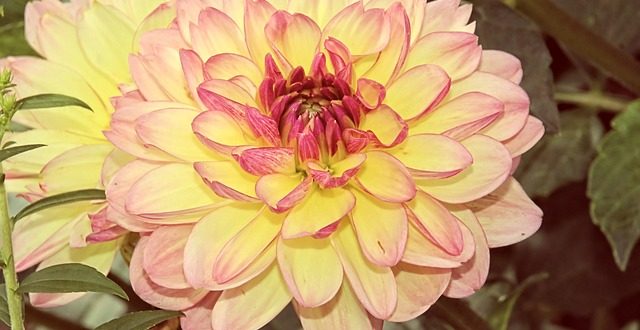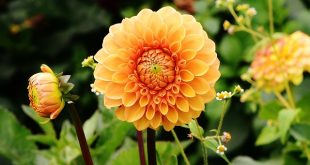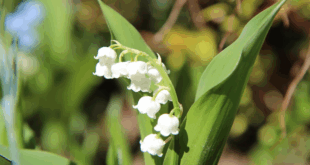Over the last few years, interest in dahlias has been reviving. Few late summer plants give so much colour, flowering continuously until the frost in autumn.
Growing and Care
For most of us, it will be necessary to lift the plants in winter. Dahlias prefer well draining soil and full sun. Only plant when there is no fear of any more frost. Feed the bed preferably with manure or a suitable fertiliser, there’s plenty of growth to fuel.
The tubers need planting about six inches deep, it’s best to place the stakes now, for non-bush varieties, use six foot stakes to give about five feet above ground. Don’t plant too closely, they need space, allow about 2.5 feet. Once they’ve reached about 18 inches, pinch out the growing tips to promote side shoots.
They need to be kept well watered but not waterlogged, feed every one to two weeks using a suitable liquid feed from late July until September.
Slugs loves Dahlias, so try your best to protect them.
Dahlia Types
There are about ten types, all with their own followers with flower sizes ranging from about 2 inches to over 10, they include;
- Pompons and the slightly larger balls have compact blooms that are incredibly neat structures demonstrating the wonders of nature.
- Cactus and semi-cactus types are more fashionable. The petals around the outside are more pointed, the inner petals are broader, more so on the semi variant. Flower sizes range from a modest 4 inches to the size of dinner plates.
- Single types have a simple centre with surrounding petals, quite delicate, not the showy type.
- Collerette have multiple circles of petals, the larger outer ring providing a backdrop to the main show.
- Waterlily have a more complex open head with about 5-7 rings of petals with a wide range of diameters.
Over wintering
After the first real frost, the plants will blacken. In milder parts of the country, you may risk leaving them in the ground. Cut down to soil level and cover with a six inch mulch.
For the rest of us, after cutting down the foliage, carefully lift and allow to dry off. Carefully rub off soil and place in a tray and cover all but the crowns with compost. Store in a frost free shed.
 Gardeners Club The Gardeners Club is a free to join online club for everyone with an interest in gardening and gardens.
Gardeners Club The Gardeners Club is a free to join online club for everyone with an interest in gardening and gardens.






